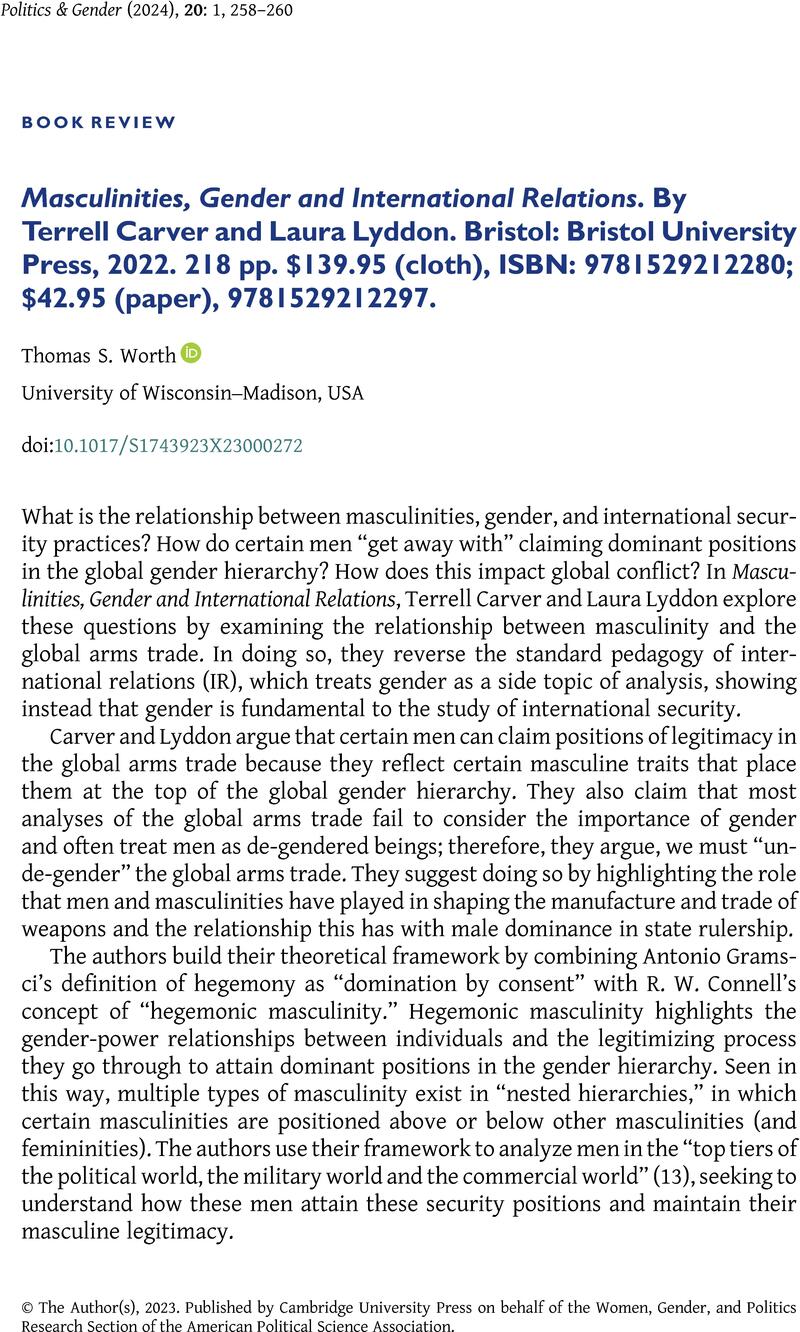No CrossRef data available.
Article contents
Masculinities, Gender and International Relations. By Terrell Carver and Laura Lyddon. Bristol: Bristol University Press, 2022. 218 pp. $139.95 (cloth), ISBN: 9781529212280; $42.95 (paper), 9781529212297.
Review products
Masculinities, Gender and International Relations. By Terrell Carver and Laura Lyddon. Bristol: Bristol University Press, 2022. 218 pp. $139.95 (cloth), ISBN: 9781529212280; $42.95 (paper), 9781529212297.
Published online by Cambridge University Press: 29 May 2023
Abstract
An abstract is not available for this content so a preview has been provided. Please use the Get access link above for information on how to access this content.

- Type
- Book Review
- Information
- Copyright
- © The Author(s), 2023. Published by Cambridge University Press on behalf of the Women, Gender, and Politics Research Section of the American Political Science Association
References
Gaufman, Elizaveta. 2022. “Damsels in Distress: Fragile Masculinity in Digital War.” Media, War & Conflict. Published online October 18. https://doi.org/10.1177/17506352221130271.CrossRefGoogle Scholar
Shand, Tim. 2022. “Masculinities and Putin’s War in Ukraine: Making the Connection between Men’s Gender and the Current Conflict.” International Journal of Men’s Social and Community Health 5 (2): e18–35. https://doi.org/10.22374/ijmsch.v5i2.84.CrossRefGoogle Scholar




